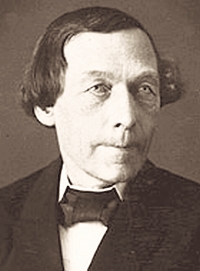|
Myrmica Rugulosa
''Myrmica rugulosa'' is a species of ant belonging to the family Formicidae. It is native to Europe. References {{Taxonbar, from=Q1515883 Myrmica Taxa named by William Nylander (botanist) Insects described in 1849 ... [...More Info...] [...Related Items...] OR: [Wikipedia] [Google] [Baidu] |
William Nylander (botanist)
William (Wilhem) Nylander (3 January 1822 – 29 March 1899) was a Finnish botanist and entomologist. Nylander was born in Oulu, and taught at the University of Helsinki before moving to Paris, where he lived until his death in 1899. Nylander studied medicine, receiving a degree in 1847. Nylander pioneered the technique of determining the taxonomy of lichens by the use of chemical reagents, such as potassium hydroxide, tinctures of iodine and calcium hypochlorite, still used by lichenologists as the K and C tests. Nylander was the first to realise the effect of atmospheric pollution Air pollution is the contamination of air due to the presence of substances in the atmosphere that are harmful to the health of humans and other living beings, or cause damage to the climate or to materials. There are many different types ... on the growth of lichens, an important discovery that paved the way for the use of lichens to detect pollution and determine the cleanness o ... [...More Info...] [...Related Items...] OR: [Wikipedia] [Google] [Baidu] |
Myrmica
''Myrmica'' is a genus of ants within the subfamily Myrmicinae. It is widespread throughout the temperate regions of the Holarctic and high mountains in Southeast Asia. The genus consists of around 200 known species and additional subspecies, although this figure is likely to rise as soon as the Chinese and Nearctic fauna lists are revised. Inquilines The genus contains a number of inquiline species (commensal symbionts), other ''Myrmica'' species that manage to invade the nest of their host. Subsequently, they use hormones to manipulate the host colony in such a way that eggs of the host queen develop into workers, and parasite brood into sexuals. Hence, the parasite is not able to sustain a colony of its own, but uses host resources instead. Similarly, larvae of the butterfly genus '' Maculinea'' (a junior synonym of ''Phengaris'', family Lycaenidae) and of the southern armyworm, live inside ''Myrmica'' nests where they are either directly fed by ants or prey upon ant broo ... [...More Info...] [...Related Items...] OR: [Wikipedia] [Google] [Baidu] |
Taxa Named By William Nylander (botanist)
In biology, a taxon (back-formation from ''taxonomy''; plural taxa) is a group of one or more populations of an organism or organisms seen by taxonomists to form a unit. Although neither is required, a taxon is usually known by a particular name and given a particular ranking, especially if and when it is accepted or becomes established. It is very common, however, for taxonomists to remain at odds over what belongs to a taxon and the criteria used for inclusion. If a taxon is given a formal scientific name, its use is then governed by one of the nomenclature codes specifying which scientific name is correct for a particular grouping. Initial attempts at classifying and ordering organisms (plants and animals) were set forth in Carl Linnaeus's system in ''Systema Naturae'', 10th edition (1758), as well as an unpublished work by Bernard and Antoine Laurent de Jussieu. The idea of a unit-based system of biological classification was first made widely available in 1805 in the intro ... [...More Info...] [...Related Items...] OR: [Wikipedia] [Google] [Baidu] |

